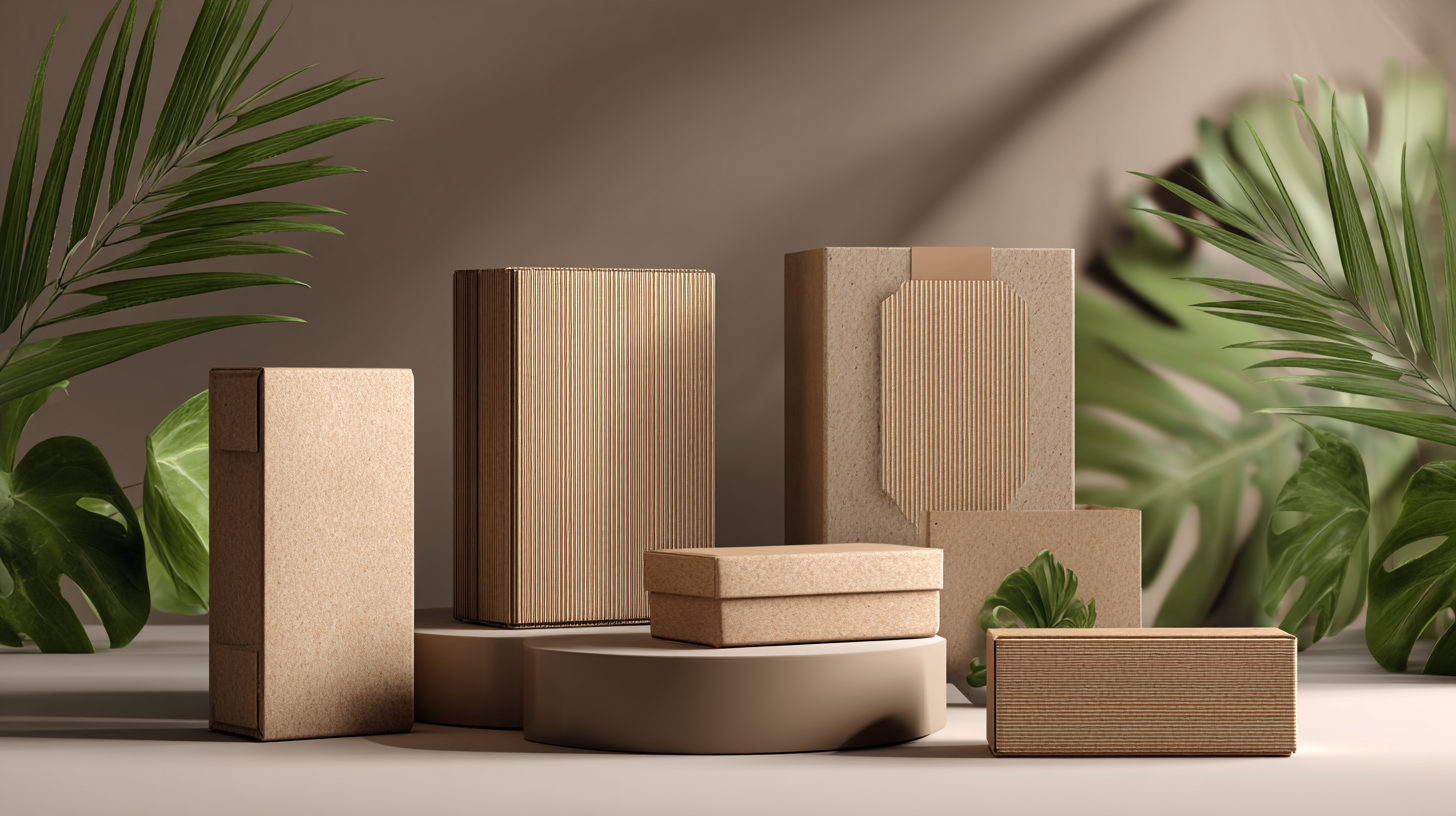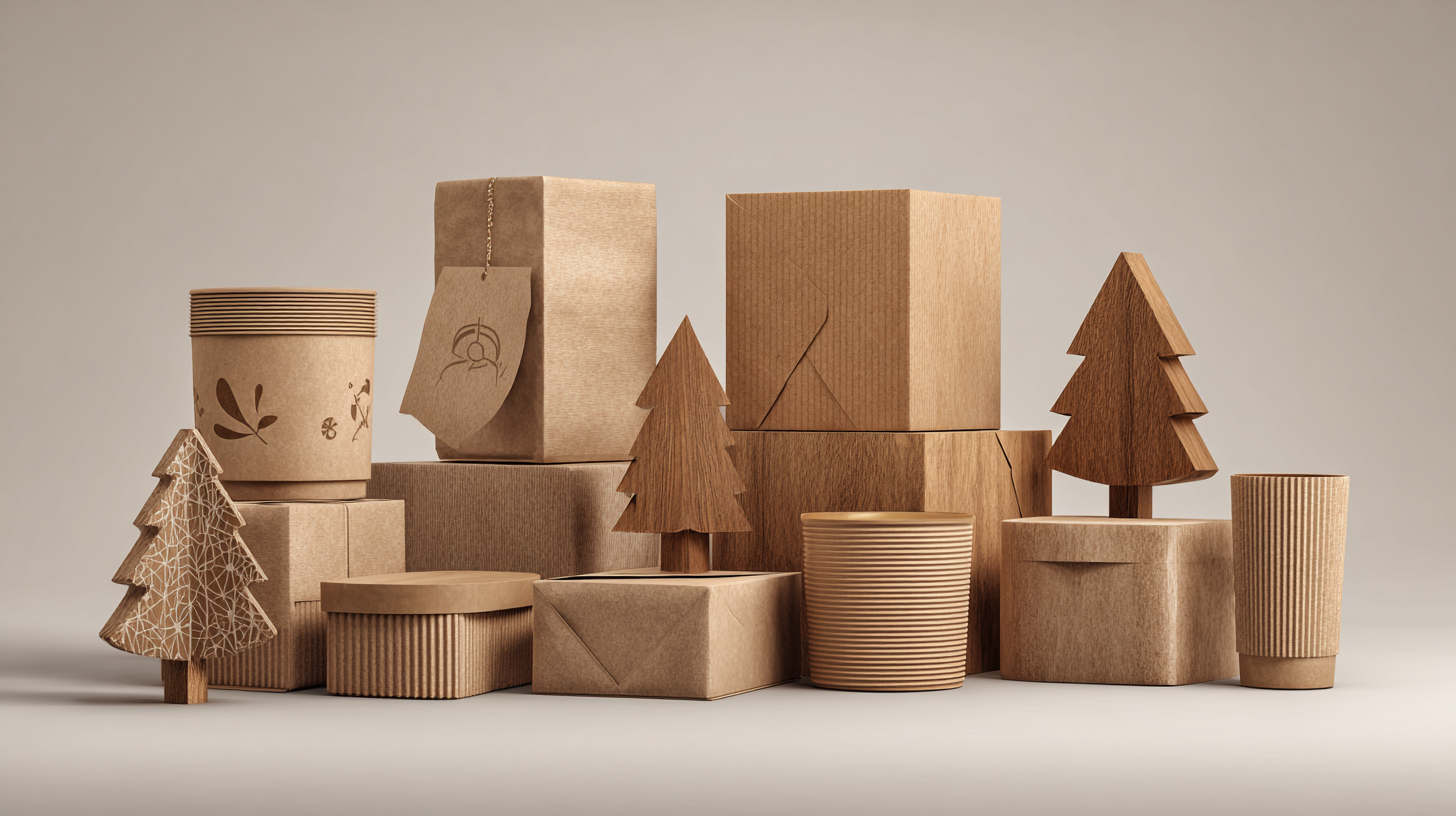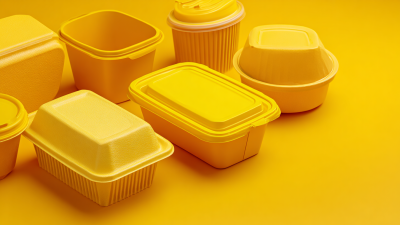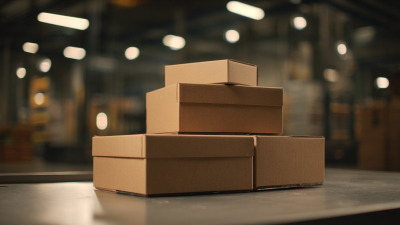As businesses increasingly recognize the importance of sustainability, eco-friendly packaging solutions have emerged as a critical component in reducing environmental impact. According to a report by Smithers Pira, the global market for eco-friendly packaging is projected to reach $500 billion by 2027, driven by consumer demand for sustainable practices and the government regulations aimed at minimizing plastic waste. In response, companies are innovating to provide packaging that not only fulfills functional requirements but also aligns with eco-conscious values.
“Eco Friendly Packaging is no longer just an option; it’s a necessity for brands that strive to resonate with environmentally aware consumers,” states Emma Thompson, an expert in sustainable packaging solutions. She emphasizes the shifting perception among businesses that eco-friendly options are integral to brand identity and long-term success. With the emergence of advanced materials and technologies, there are now numerous viable alternatives available that enable manufacturers to replace traditional packaging with sustainable options.
In this context, we present the top 10 eco-friendly packaging solutions for 2025 that can empower sustainable businesses. These innovative approaches not only reduce the carbon footprint but also enhance brand loyalty by appealing to consumers who prioritize environmental responsibility. As we delve into these solutions, it becomes evident that adopting eco-friendly packaging is not merely a trend but a pivotal strategy for businesses aiming for sustainability in an increasingly eco-conscious marketplace.

As the demand for sustainable practices increases, innovative biodegradable materials are emerging as viable alternatives to traditional plastics in packaging. These biodegradable plastics decompose into natural substances like water, carbon dioxide, and biomass through microbial activity, allowing for faster breakdown compared to conventional materials. The global market for biodegradable polymers is projected to exceed $13 billion by 2025, with an impressive compound annual growth rate (CAGR) of approximately 21.4% anticipated from 2026 to 2035. This growth is driven by eco-conscious businesses seeking effective and environmentally friendly packaging solutions.
One notable advancement is a natural coating derived from edible mushroom mycelium and cellulose nanofibers, offering a waterproof and durable packaging solution. This innovative approach aims to replace single-use plastics while significantly reducing global pollution. Additionally, research initiatives are underway to develop biodegradable materials that can replace petroleum-based plastics, signaling a revolutionary shift in the packaging sector. The fungi-based packaging market, valued at $84.9 million in 2024, is projected to grow at a CAGR of over 9.4% from 2025 to 2034, driven by increasing consumer demand for sustainable packaging options.
As eco-conscious brands increasingly prioritize sustainability, the importance of reusable packaging solutions cannot be overstated. Revolutionizing packaging practices not only reduces waste but also aligns with the values of consumers who are more environmentally aware than ever. Brands are now exploring innovative materials and designs that promote circularity, making it easier for customers to use and return packaging systems seamlessly. For instance, companies are integrating modular designs that allow for multiple uses, transforming single-use packaging into a sustainable asset.
Furthermore, advancements in technology have enabled brands to adopt smart packaging solutions. These include the use of QR codes and tracking systems that facilitate the return process, ensuring that reusable items are efficiently circulated back into the supply chain. As brands leverage these technologies, they not only enhance the customer experience but also contribute to the greater goal of reducing environmental impact. By revolutionizing reusable packaging, eco-conscious brands are leading the charge towards a more sustainable future, setting an example for others to follow in the pursuit of responsible consumption and production.
| Packaging Solution | Material Type | Reusability | Biodegradability | Cost Efficiency |
|---|---|---|---|---|
| Reusable Glass Containers | Glass | High | Yes | Moderate |
| Compostable Mailers | Bio-based Plastics | No | Yes | Low |
| Recyclable Cardboard Boxes | Cardboard | No | Yes | Low |
| Biodegradable Packaging Peanuts | Starch-based Material | No | Yes | Moderate |
| Reusable Tote Bags | Cotton or Recycled Material | High | No | Low |
| Plant-based Food Containers | PLA (Polylactic Acid) | No | Yes | Moderate |
| Edible Packaging | Seaweed or Rice Paper | No | Yes | High |
| Mushroom Packaging | Mushroom Mycelium | No | Yes | Moderate |
| Recycled Paper Wraps | Recycled Paper | No | Yes | Low |
| Natural Fiber Packing | Hemp, Jute | No | Yes | Moderate |
The growing urgency for sustainable practices in business has placed compostable packaging at the forefront of the circular economy. A report from Smithers reveals that the global demand for compostable packaging is expected to reach $11.6 billion by 2025, highlighting its vital role in waste reduction and environmental stewardship. Compostable materials, which decompose naturally in a composting environment, not only reduce landfill contributions but also return valuable nutrients to the soil, thereby fostering a more regenerative cycle.
Research by the Biodegradable Products Institute indicates that compostable packaging can divert up to 30% of waste from landfills when implemented effectively. This aligns with the goals of the circular economy, which emphasize resource efficiency and lifecycle sustainability. As consumers increasingly prefer products with sustainable packaging—80% reportedly consider this in their purchasing decisions—businesses must adapt by integrating compostable options. The transition not only supports corporate responsibility goals but also positions brands favorably in a market that is progressively prioritizing environmental impact over traditional convenience.
In recent years, the push for sustainability has transformed the packaging landscape. Smart packaging technologies are at the forefront of this evolution, utilizing innovative materials and designs to enhance eco-friendliness while minimizing waste. According to a report by Smithers Pira, the global smart packaging market is projected to reach $43 billion by 2025, significantly driven by the demand for sustainable solutions. These technologies not only extend the shelf life of products but also enable real-time monitoring, ensuring that food waste is reduced significantly—potentially cutting losses by up to 30% in perishable goods.

An impressive advancement within this sphere is biodegradable packaging, which uses materials like polylactic acid (PLA) derived from renewable resources. Research from the Biodegradable Products Institute indicates that such packaging can reduce landfill contributions by up to 90% compared to traditional plastics. Additionally, QR codes and RFID tags integrated into packaging allow consumers to engage with recycling programs more effectively, ensuring proper disposal and encouraging recycling habits. As businesses increasingly adopt these smart solutions, they not only meet consumer demand for sustainable practices but also align with broader environmental goals, reinforcing a commitment to a circular economy.
In recent years, minimalist packaging design has gained significant traction in the realm of eco-friendly practices, as businesses seek to reduce waste and enhance brand identity. According to a report from Smithers Pira, the sustainable packaging market is projected to reach $440 billion by 2025, emphasizing the increasing demand for eco-conscious alternatives. Minimalist packaging, characterized by its simple and functional design, not only minimizes material usage but also reduces the overall environmental footprint of products. By stripping away unnecessary elements, brands can focus on what truly matters—delivering value while being kind to the planet.

Moreover, consumers are becoming more aware of their purchasing choices, prompting businesses to adopt sustainable practices. A survey by Nielsen found that 73% of global consumers are willing to change their consumption habits to reduce their environmental impact. This shift in consumer behavior highlights the importance of minimalist packaging, which often uses recyclable or biodegradable materials, aligning with the values of sustainability-focused customers. As companies continue to innovate in their packaging solutions, minimalism not only serves aesthetic purposes but also reinforces the commitment to a greener future, proving that less can indeed be more in ethical packaging strategies.






